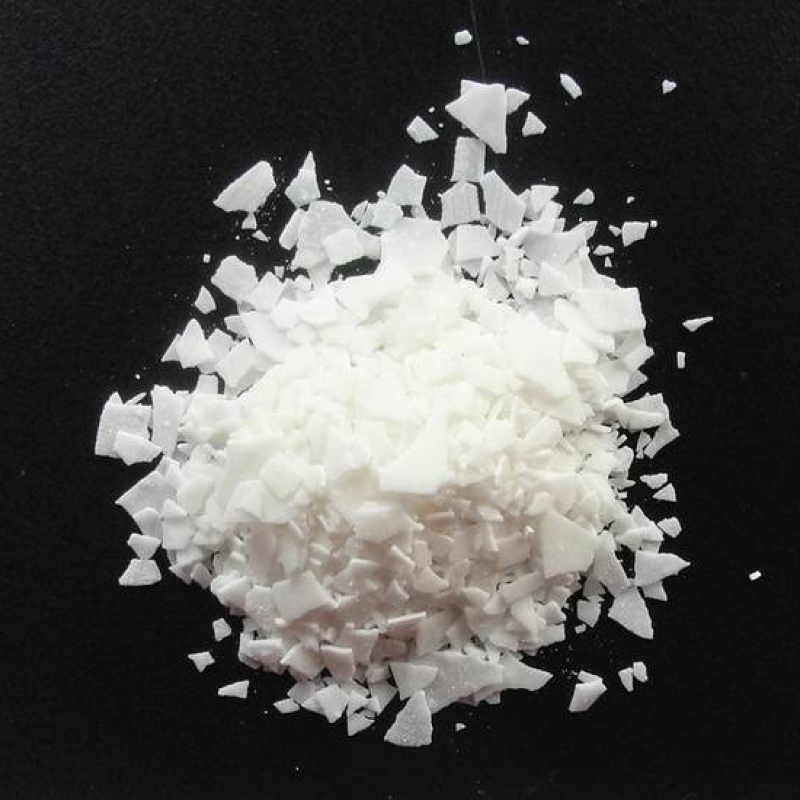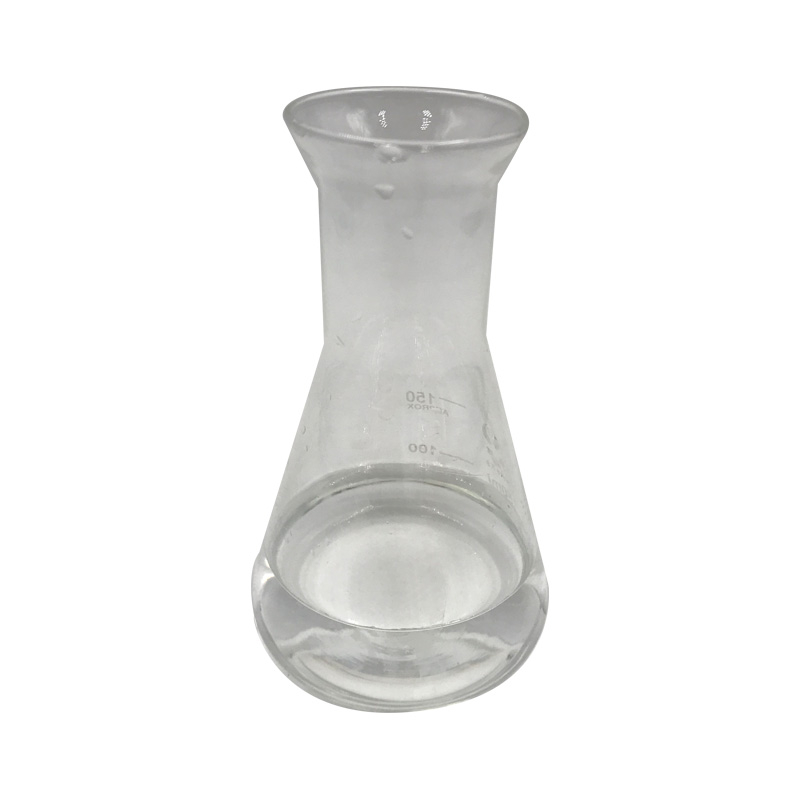Products Description of Dimethyl thio-toluene diamine CAS#106264-79-3DMTDA is a new type of polyurethane elastomer curing crosslinking agent, which mainly contains two isomers, namely a mixture of 2,4- and 2,6-dimethylthiotoluenediamine (the ratio is about 77~80/17~20).
Contact Now
Products Description of diisooctyl 2,2'-[(dioctylstannylene)bis(thio)]diacetateCAS#26401-97-8Mainly used in PVC products that come into contact with food and medicine, such as plates, sheets, films, etc., and can be used in processes such as calendering, blow molding, extrusion, injection, etc.diisooctyl 2,2'-[(dioctylstannylene)bis(thio)]diacetate Chemical Propertiesdensity 1.08[at 20℃]vapor pressure 0Pa at 25℃storage temp. Refrigerator, under inert atmospheresolubility Chloroform (Slightly), Ethyl Acetate (Slightly)form Oilcolor ColourlessWater Solu
Contact Now
Products Description of Thiabendazole CAS#148-79-8Thiabendazole is commonly known as Teketol, Thiabendazole, Thiabendazole, Thiabendazole, and Thiabendazole. It has systemic apical conductivity, but cannot conduct to the base. It has a long lasting effect and has cross-resistance with benzimidazole fungicides. It has inhibitory activity against ascomycetes, basidiomycetes and deuteromycetes and is used to prevent and treat various crop fungal diseases and preserve fruits and vegetables.
Contact Now
Products Description of Thiabendazole CAS#148-79-8Thiabendazole is commonly known as Tekodo, Tibilin, Thiobendazole, Thiabendazole, and Thiabendazole. It has the ability to conduct systemically to the top, but not to the base. It has a long lasting effect and has cross-resistance with benzimidazole fungicides. It has inhibitory activity against ascomycetes, basidiomycetes, and deuteromycetes, and is used to prevent and control fungal diseases of various crops and preserve fruits and vegetables.
Contact Now
Products Description of 2,2-Dimethyl-1,3-dioxolane-4-methanol CAS#100-79-8(+,-)-2,2-Dimethyl-4-hydroxy-1,3-dioxane is a chemical.2,2-Dimethyl-1,3-dioxolane-4-methanol Chemical PropertiesMelting point -27℃Boiling point 189-191 °Cdensity 1.066 g/mL at 20 °C(lit.)vapor pressure 34Pa at 20℃refractive index n20/D 1.434Fp 176 °Fstorage temp. Sealed in dry,2-8°Csolubility 172g/l solubleform Liquidpka14.20±0.10(Predicted)color Clear colorlessPH4.0-7.5 (H2O)Water Solubility miscibleMerck 14,5213Safety Informa
Contact Now
Products Description of DIMETHYL SULFOXIDE-D6 CAS#2206-27-1The content of deuterated dimethyl sulfoxide reagents on the market is only about 99.5%, and the main impurities are water and dimethyl sulfone. Deuterated dimethyl sulfoxide is a sulfur-containing organic compound. It is a colorless, odorless, transparent liquid at room temperature. It is a hygroscopic flammable liquid with high polarity, high boiling point, good thermal stability, aprotic, miscible with water, etc. It can be dissolved in most organic substances such as ethanol, propanol, and chloroform.
Contact Now
Products Description of DIMETHYL DICARBONATE CAS#4525-33-1Dimethyldicarbonate (DMDC), also known as Vigorin, is a fruit juice beverage preservative permitted for use in my country's food additives standards (INS No. 242). At room temperature or even low temperature, DMDC has a strong killing ability against many contaminating bacteria in fruit juice beverages. Its antiseptic effect is closely related to the modification and inactivation of key enzyme proteins in the bacteria by DMDC.
Contact Now
Products Description of TrichloroethyleneCAS#79-01-6Trichloroethylene (TCE), also known as acetylated trichloroethylene, is a colorless, slightly sweet volatile liquid and a highly soluble solvent. It is insoluble in water but soluble in organic solvents such as ethanol and ether. It is non-flammable under normal conditions.
Contact Now
Products Description of 2,5-Dimethyl-2,4-Hexadiene CAS#764-13-62,5-Dimethyl-2,4-hexadiene is a chemical,Insoluble in water, soluble in alcohol and ether.2,5-Dimethyl-2,4-hexadiene Chemical PropertiesMelting point 12 °CBoiling point 132134°Cdensity 0.773 g/mL at 25 °C(lit.)vapor density 3.8 (vs air)vapor pressure 26.9 mm Hg ( 37.7 °C)refractive index n20/D 1.476(lit.)Fp 85 °Fstorage temp. Flammables areasolubility Chloroform, Ethyl Acetateform Oilcolor Clear ColourlessBRN 1733342LogP3.500CAS DataBase Refer
Contact Now
Products Description of Maltose CAS#69-79-4Maltose is the abbreviation of maltobiose, also known as D-maltose and maltose. A disaccharide formed by connecting, condensing, and dehydrating two molecules of α-D-glucose through α-1,4 glycosidic bonds. There is also a free hemiacetal hydroxyl group in the molecule, which is a reducing sugar. Like glucose, it can make Doron's reagent and Fehling's reagent react positively.
Contact Now
Products Description of Didecyl dimethyl ammonium chloride CAS#7173-51-5Didecyl dimethyl ammonium chloride belongs to the double-chain quaternary ammonium salt compounds, which are used in many products due to their bactericidal, virucidal and fungicidal properties. In terms of disinfection function classification, didecyl dimethyl ammonium chloride belongs to the medium-level disinfectant and is a broad-spectrum virus disinfectant.
Contact Now
Products Description of 2,5-Dimethyl-2,5-hexanediolCAS#110-03-2This product is white crystal, m.p.88.5~90℃, b.p.214~215℃, relative density 0.898, soluble in water, acid, alcohol, acetone, insoluble in benzene, carbon tetrachloride and other organic solvents2,5-Dimethyl-2,5-hexanediol Chemical PropertiesMelting point 86-90 °C (lit.)Boiling point 214-215 °C (lit.)density 0,898 g/cm3vapor pressure 0.18Pa at 20℃refractive index 1.4429 (estimate)Fp 126 °Cstorage temp. Keep in dark place,Sealed in dry,Room Temperaturepka15.07±0.29(Predicted)form Crystalli
Contact Now
Products Description of Isosorbide dimethyl ether CAS#5306-85-4 Isosorbide dimethyl ether is a colorless oily liquid. It is very stable under neutral conditions, hygroscopic, and miscible with many organic solvents. It is often used as a solvent. DMI can promote the penetration of active ingredients into the epidermis of the skin and give full play to the effectiveness of active ingredients.
Contact Now
Products Description of Didecyl dimethyl ammonium chloride CAS#7173-51-5Didecyl dimethyl ammonium chloride belongs to the double-chain quaternary ammonium salt compounds, which are used in many products due to their bactericidal, virucidal and fungicidal properties. In terms of disinfection function classification, didecyl dimethyl ammonium chloride belongs to the medium-level disinfectant and is a broad-spectrum virus disinfectant.
Contact Now
Products Description of 3-Chloro-6-methylpyridazine CAS#1121-79-53-Chloro-6-methylpyridazine is a heterocyclic compound and chemical raw material. It has a low melting point and boiling point, and is usually light yellow to light beige in powder form.
Contact Now
Products Description of Dimethyl terephthalate CAS#120-61-6Dimethyl terephthalate (DMT) is a key precursor in the production of polyethylene terephthalate (PET), widely recognized for its applications in the manufacturing of plastic bottles, fibers, and films. In academic and industrial R&D, DMT is the subject of innovative research, such as its hydrogenation to dimethyl cyclohexanedicarboxylates (DMCD) using bimetallic catalysts, which has demonstrated an 80% conversion rate and 95% selectivity under optimized conditions 43.
Contact Now
Products Description of Dimethyl Disulfide 99.5% MIN CAS#624-92-0Dimethyl disulfide is an organic compound with the chemical formula C2H6S2.Dimethyl disulfide Chemical PropertiesMelting point -85 °CBoiling point 109 °C(lit.)density 1.0625vapor density 3.24 (vs air)vapor pressure 22 mm Hg ( 20 °C)refractive index n20/D 1.525(lit.)FEMA 3536 | DIMETHYL DISULFIDEFp 76 °Fstorage temp. Flammables areasolubility 2.7g/lform LiquidSpecific Gravity1.0647 (20/4℃)color Clear yellowOdorat 0.10 % in propylene glycol.
Contact Now
Products Description of Dimethyl-Amino Propyl-Amine CAS#109-55-7N,N-dimethyl-1,3-diaminopropane is an organic compound with the molecular formula C₅H₁₄N₂3-Dimethylaminopropylamine Chemical PropertiesMelting point -60 °CBoiling point 133 °C(lit.)density 0.812 g/mL at 25 °C(lit.)vapor density 3.6 (vs air)vapor pressure 5 mm Hg ( 20 °C)refractive index n20/D 1.435(lit.)Fp 90 °Fstorage temp. Store below +30°C.form Liquidpka10.13±0.10(Predicted)color ClearOdorammoniacal odorPH12.7 (100g/l, H2O, 20℃)explosive limit2
Contact Now
Products Description of Benzyltributylammonium chloride CAS#23616-79-7Benzyltri-n-butylammonium chloride CAS number: 23616-79-7. Molecular weight: 311.93. LogP: 2.40770. Appearance and properties: white to light yellow crystals.
Contact Now
Products Description of Cobalt carbonate CAS#513-79-1Red monoclinic crystals or powder. Almost insoluble in water, alcohol, methyl acetate and ammonia.
Contact Now
Products Description of Ademetionine 1,4-butanedisulfonate CAS#101020-79-5S-Adenosylmethionine 1,4-butanedisulfonate is used to synthesize sulfo-adenosyl-L-methionine (SAMe) salt.Ademetionine 1,4-butanedisulfonate Chemical PropertiesMelting point >48oC (dec.)storage temp. under inert gas (nitrogen or Argon) at 2-8°Csolubility DMSO (Slightly, Heated), Methanol (Slightly), Water (Slightly)form Solidcolor Off-WhiteStability:HygroscopicInChIKeyPVCDYZJGZPCASW-FGEWMKOMNA-MSMILESC(CCCS(O)(=O)=O)S(O)(=O)=O.O[C@@H]1[C@@H]([C@@H](C[S+](C)CC[C@H](N)C(=O)O)O[C@H]1N1C=NC2C(
Contact Now
Products Description of Chloroacetyl Chloride CAS#79-04-9Colorless or slightly yellow liquid with strong irritation. Soluble in benzene, carbon tetrachloride, ether and chloroform. Toxic! Irritating to eyes and mucous membranes.Chloroacetyl chloride has active chemical properties and decomposes when exposed to water and alcohol. It can be used as an acylation reagent. For example, it can react with naphthalene, cyclopropane, ethylene and other reagents.
Contact Now
Products Description of Methyl Tributyl Ammonium Chloride CAS#56375-79-2Methyltributylammonium chloride, also known as tributylmethylammonium chloride, has a molecular formula of C13H30ClN, a molecular weight of 235.84, and a CAS registration number of 56375-79-2.
Contact Now
Products Description of DDAO CAS#2605-79-0N,N-Dimethyldecyl-N-amine oxide is an organic compound with a chemical formula of C12H27NO and a molecular weight of 201.35.DDAO Chemical PropertiesMelting point 70 - 73°Cdensity 0.996 g/mL at 20 °Cvapor pressure 0Pa at 25℃refractive index n20/D 1.337storage temp. 2-8°Csolubility Chloroform (Slightly), Methanol (Slightly)form Solidpka4.79±0.40(Predicted)color White to Off-WhiteWater Solubility 409.5g/L at 30℃BRN 2352550InChIKeyZRKZFNZPJKEWPC-UHFFFAOYSA-NLogP0.95 at 20℃CAS DataBa
Contact Now



![diisooctyl 2,2'-[(dioctylstannylene)bis(thio)]diacetateCAS#26401-97-8](https://sdluxicdn.huazhi.cloud/cdn/ff/MEIXbra4wyUKJKW67w9UkqzwQzIZQBAtmtXt1eQRqFc/1718820022/public/styles/chanpinzhutu/public/2024-06/%E6%97%A0%E8%89%B2%E6%B6%B2%E4%BD%93%20%283%29%20-%20%E5%89%AF%E6%9C%AC_41.jpg?itok=btFpy9ph)






























